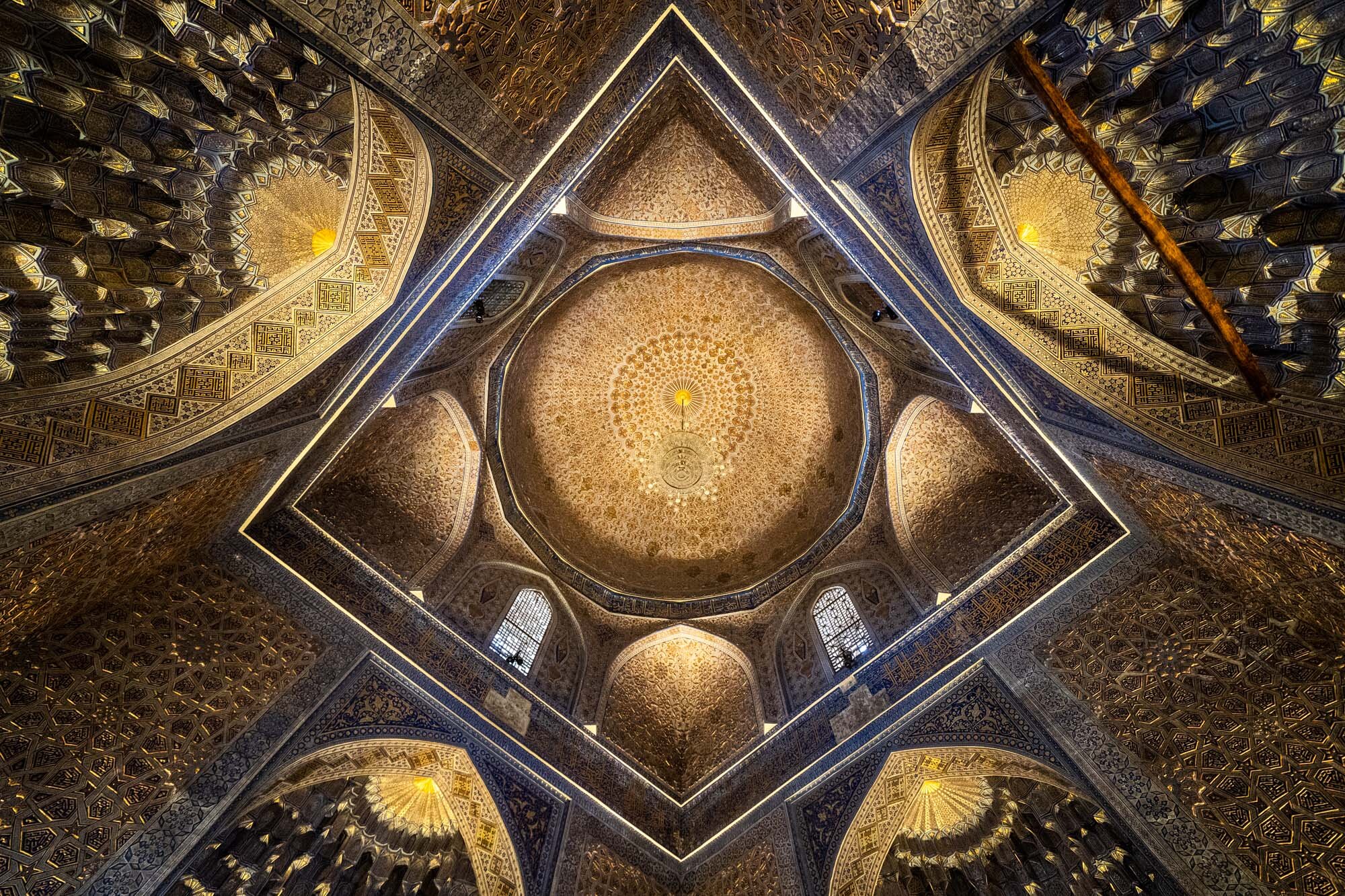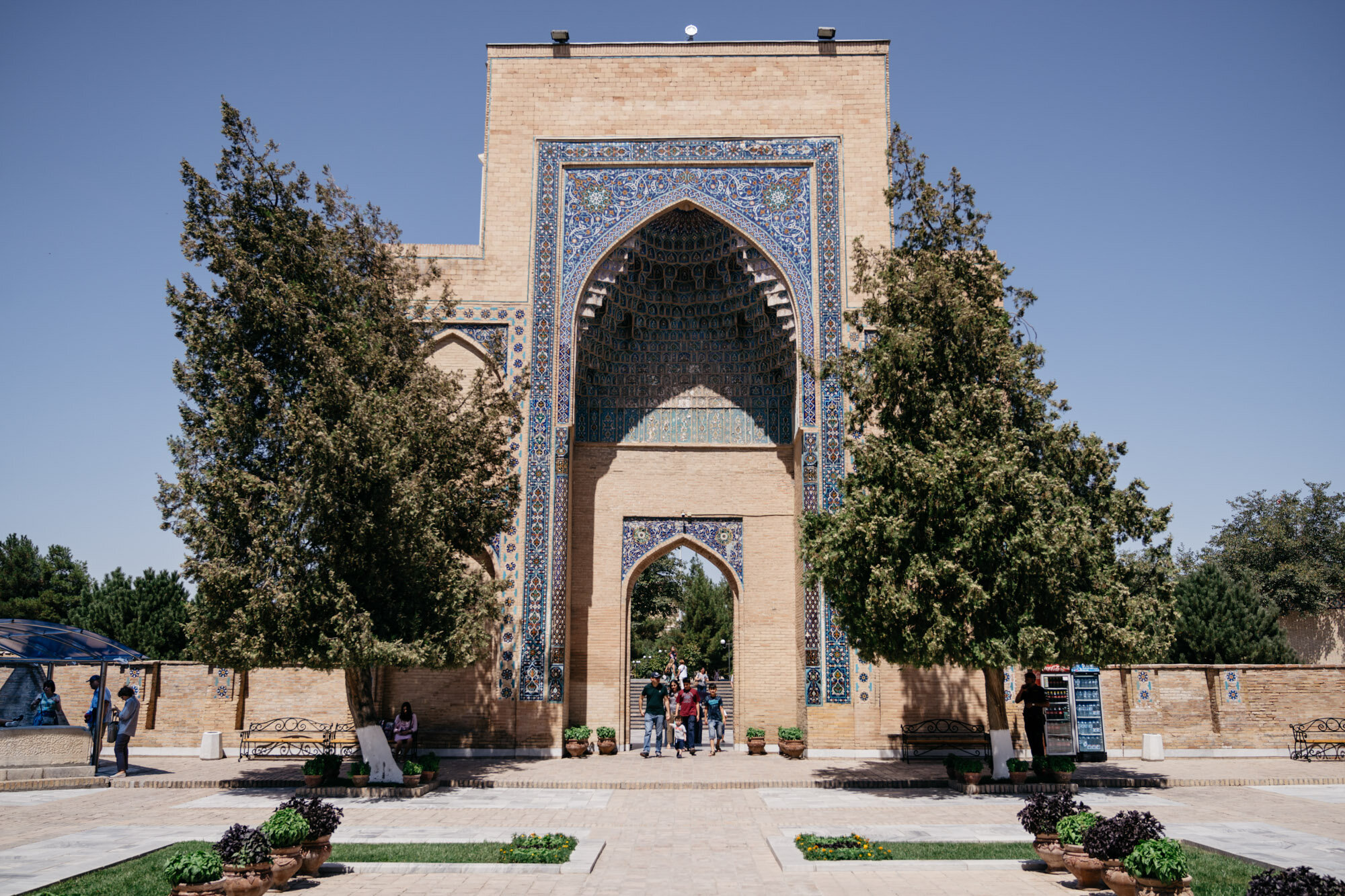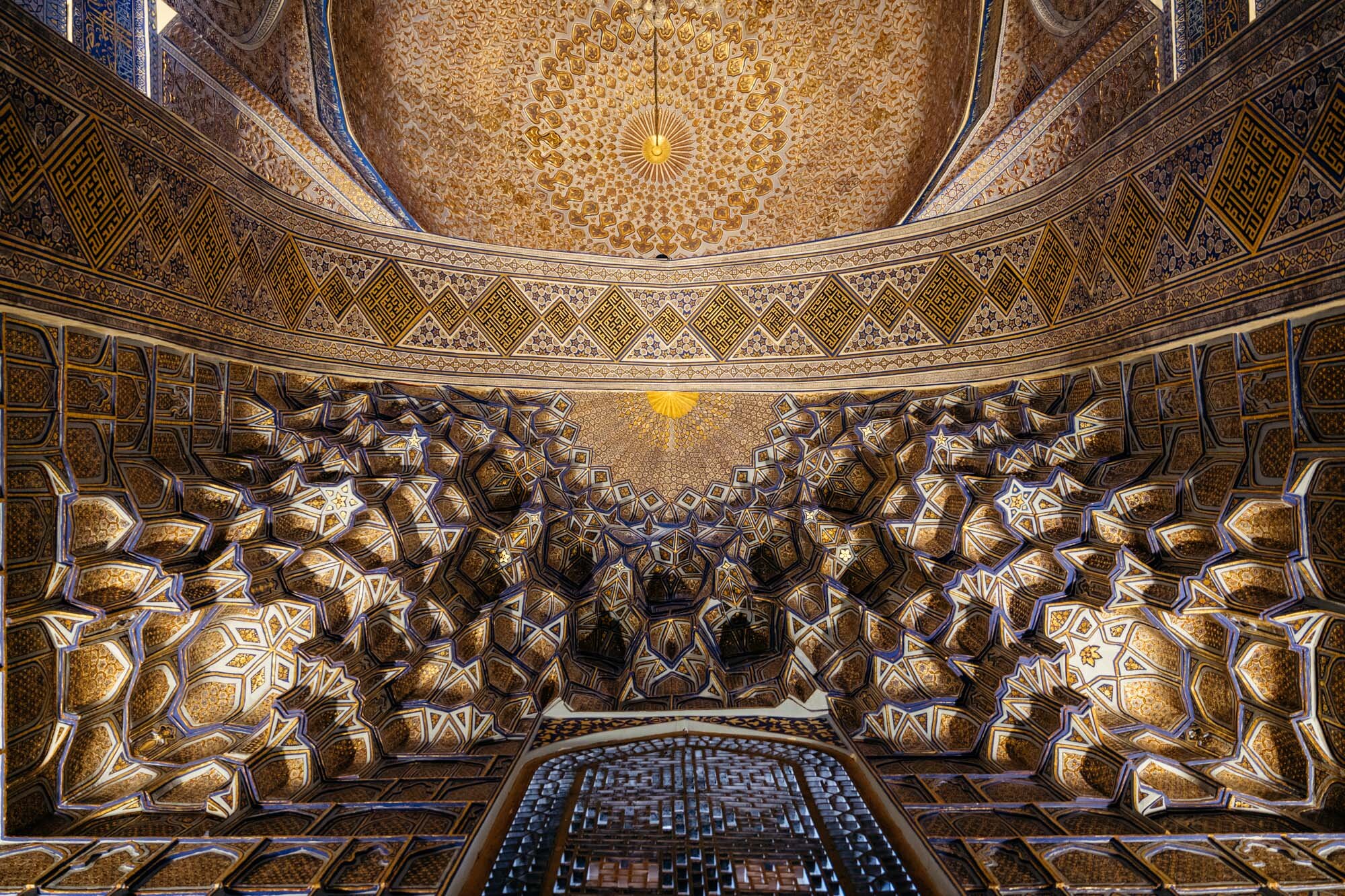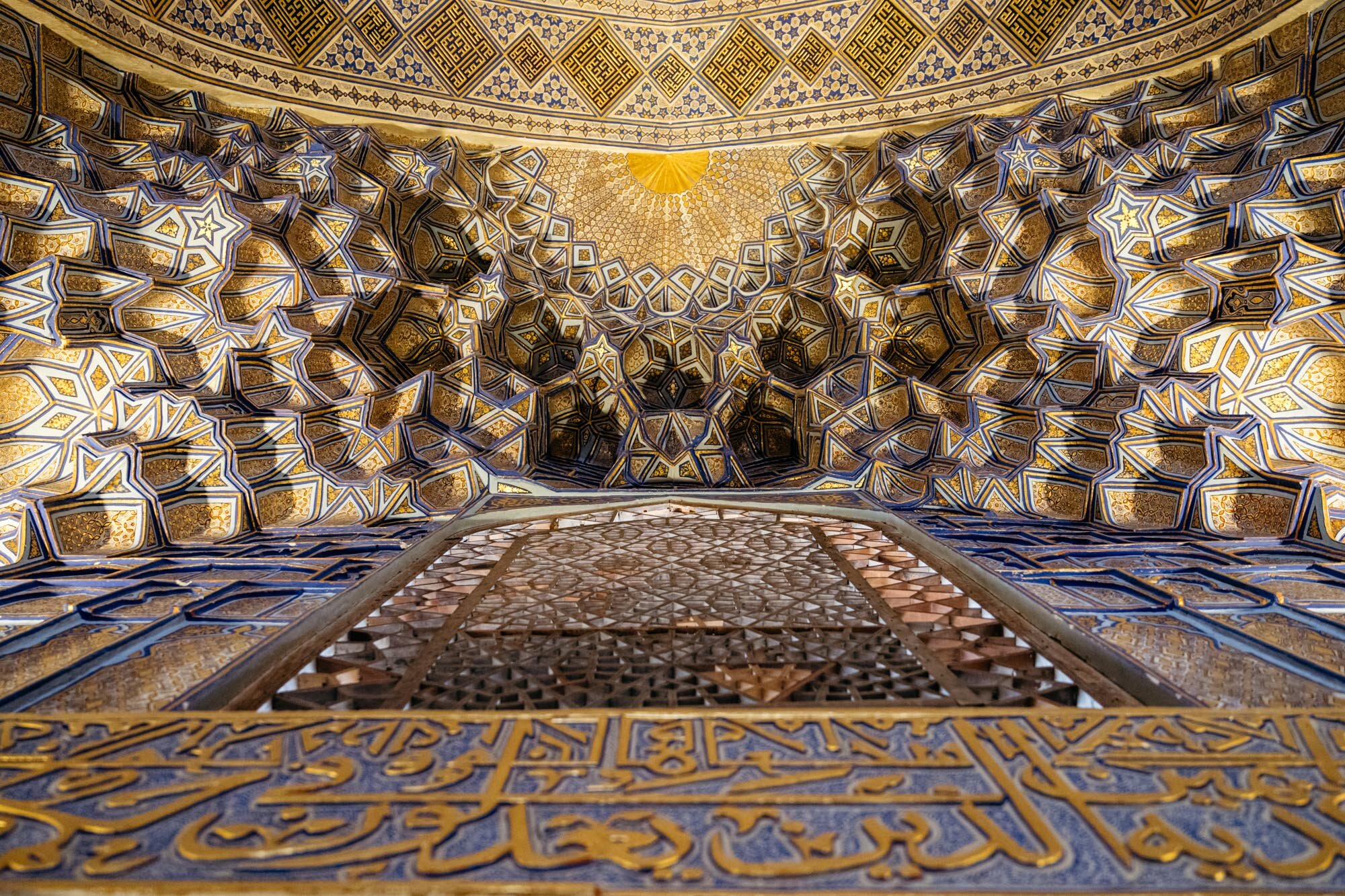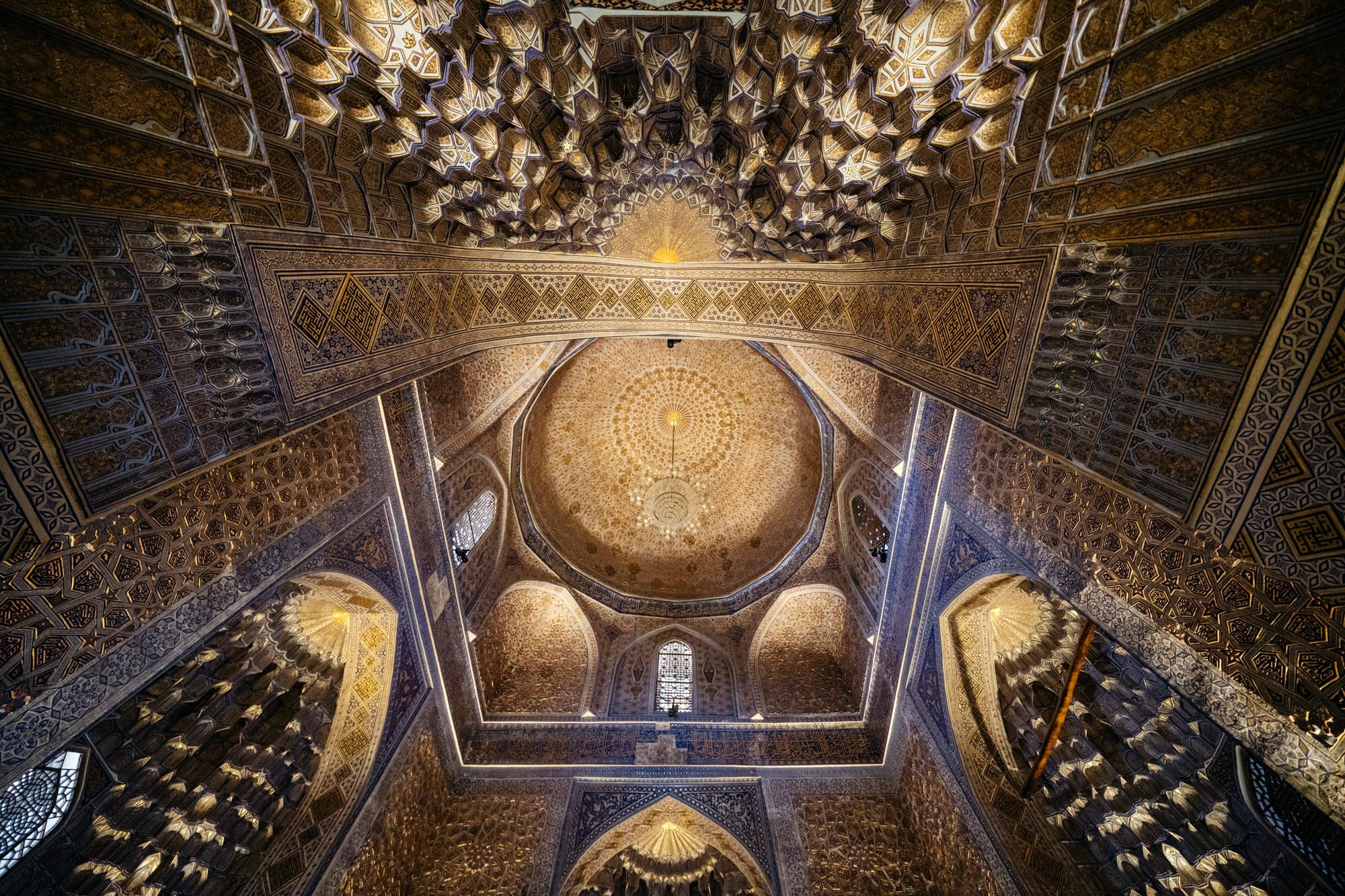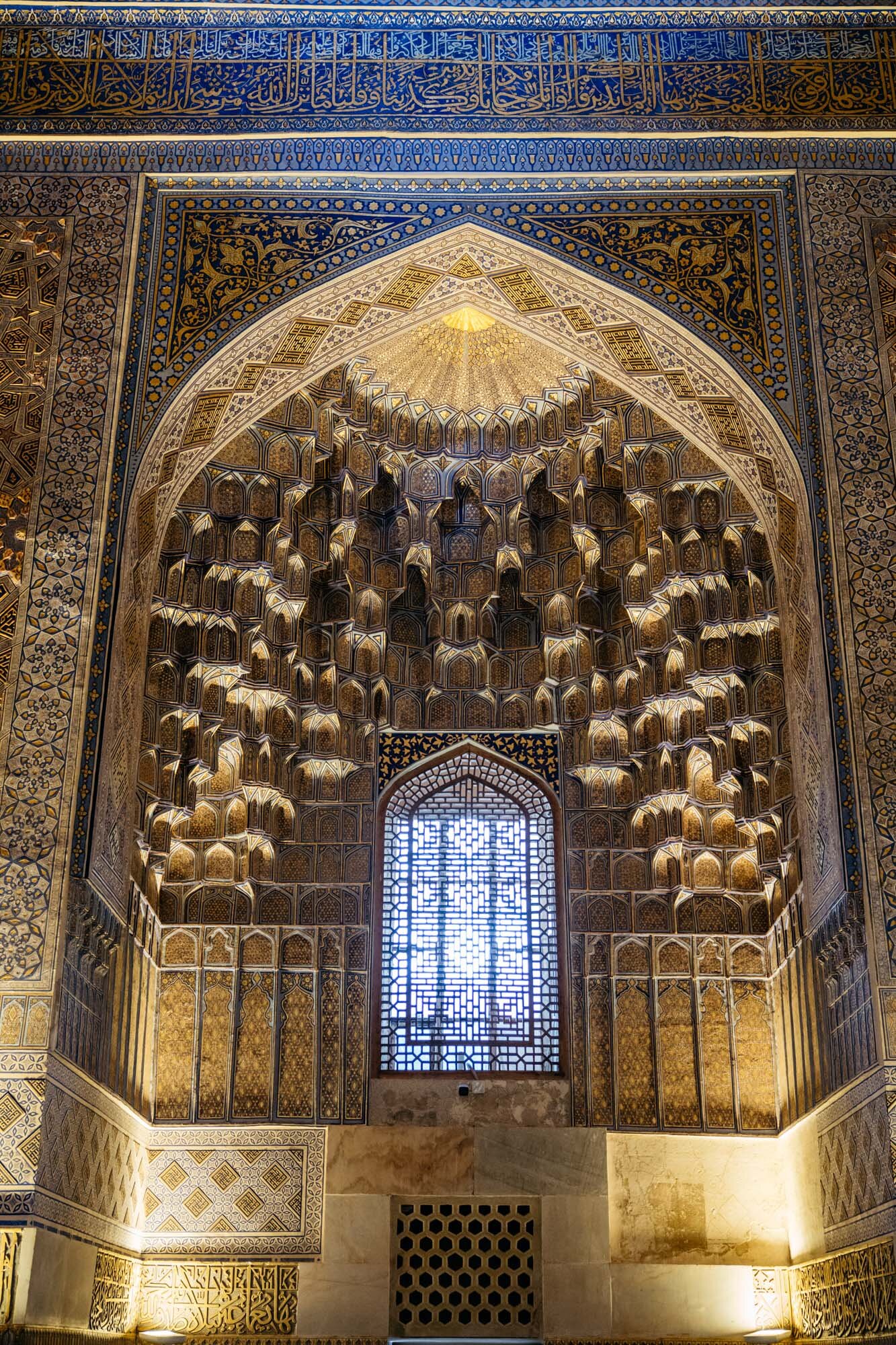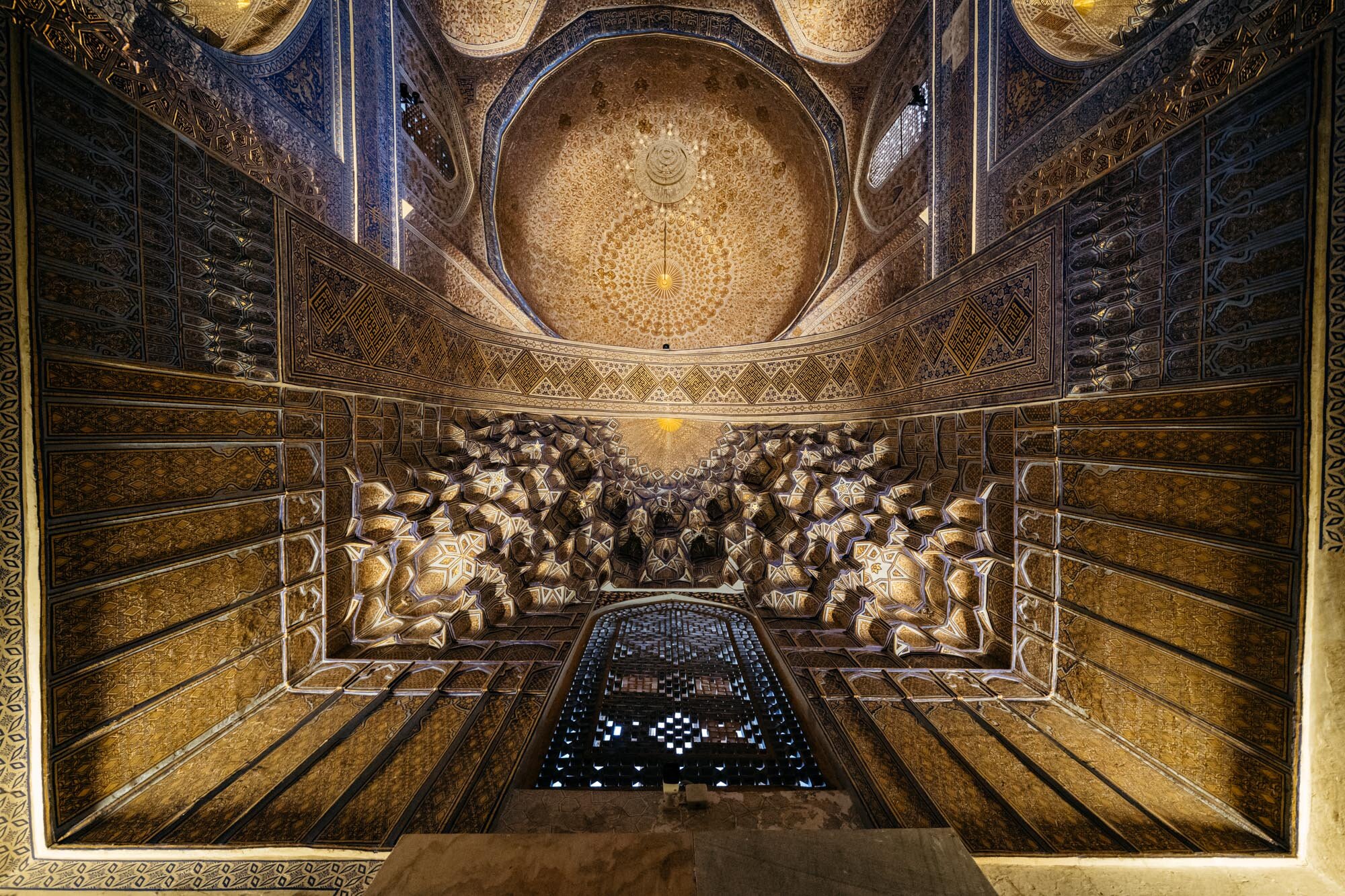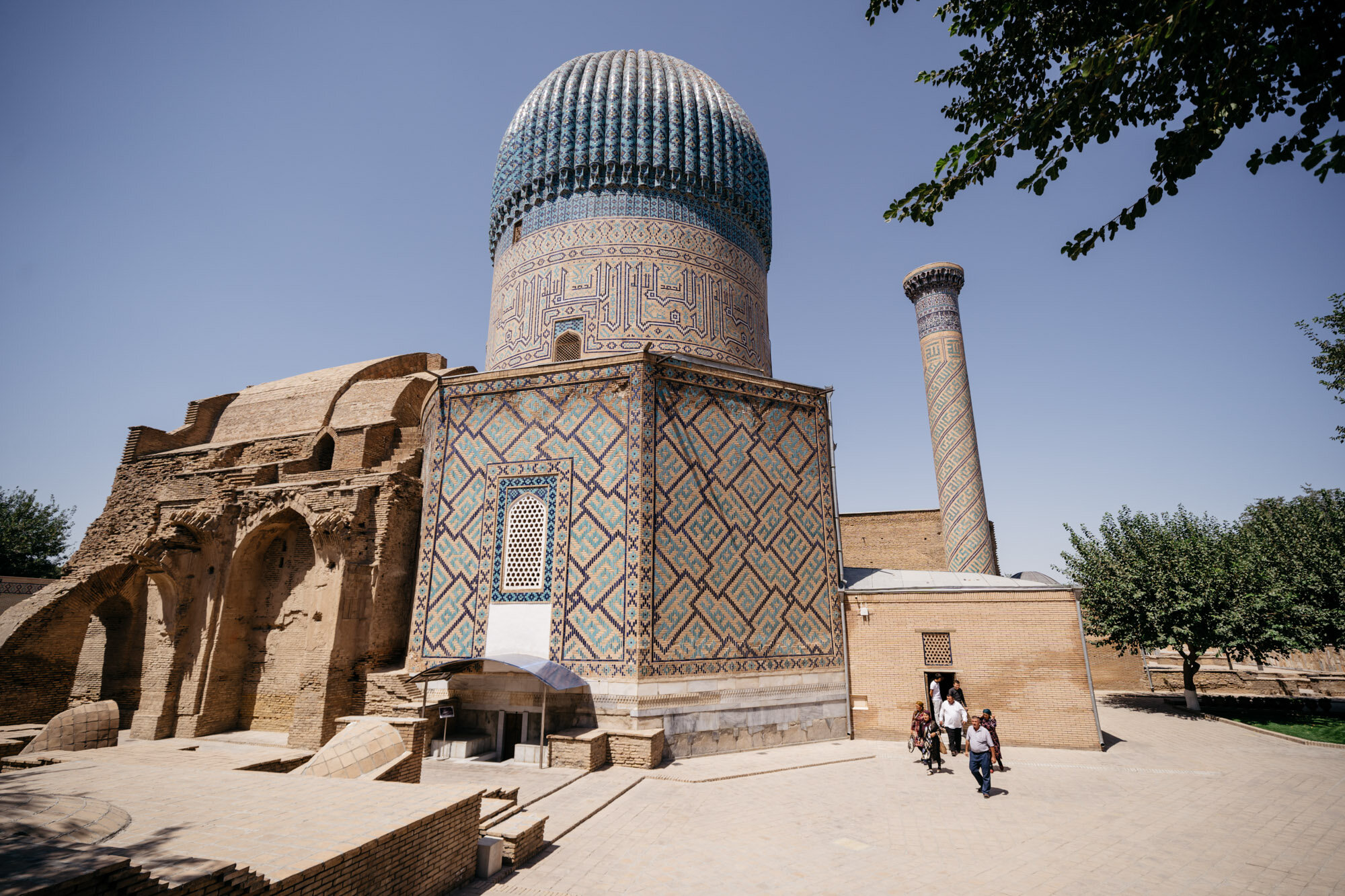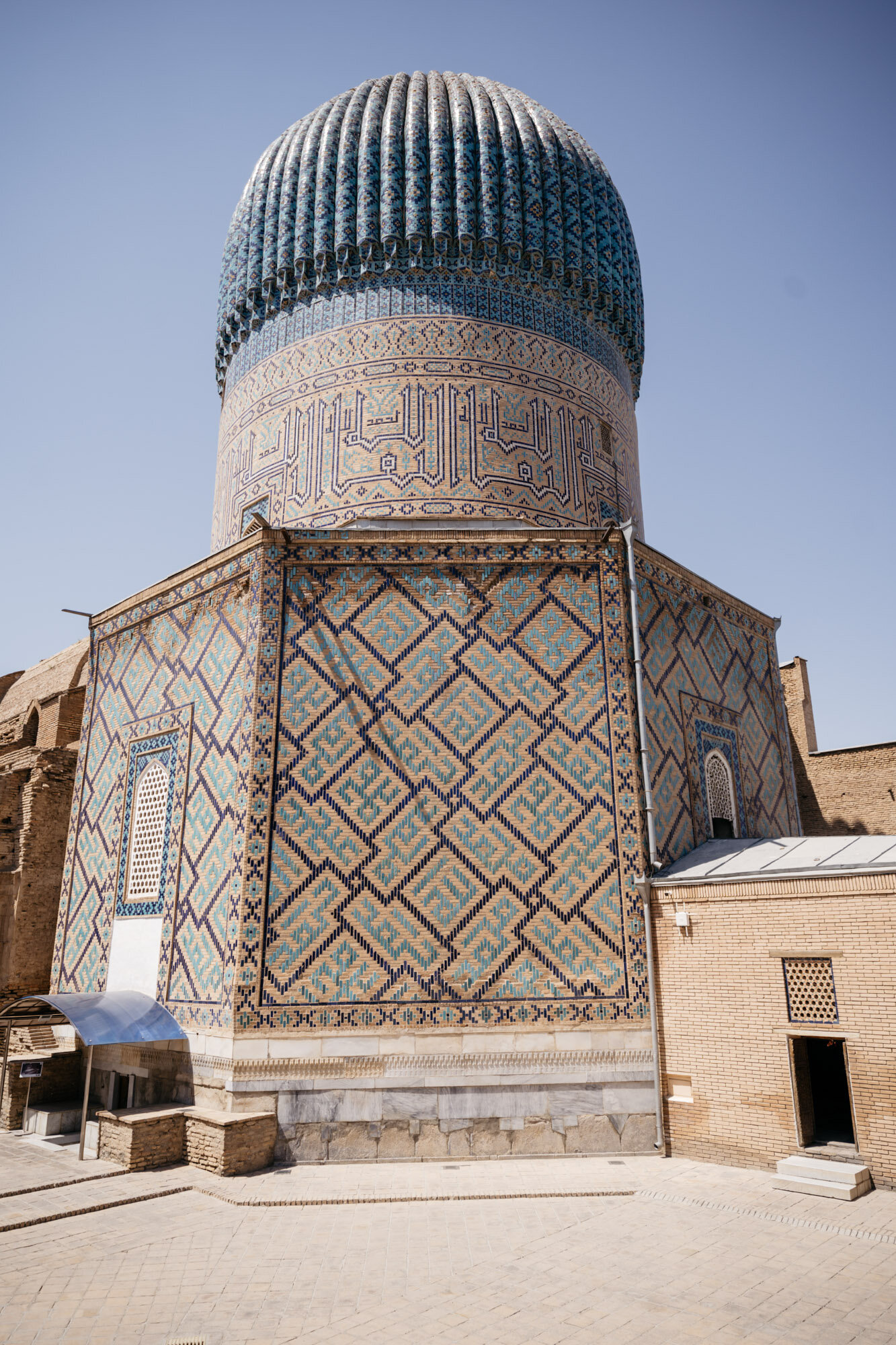The mausoleum of Amir Timur in Samarkand
This mausoleum in Samarkand in Uzbekistan is known as Gur-e-Amir, Persian for "Tomb of the King".
Inside is the final resting place of one of the greatest Mongol kings, Amir Timur, also known as Tamerlane or Timur the Lame on account of a his limp; the result of an injury sustained in battle.
Timur was the the founder of an eponymous dynasty - the Timurids (1370–1507) - and an empire that, at its peak, stretched for thousands of miles from northern India to the Mediterranean.
Timur employed ruthless - at times barbaric - aggression in his empire-building but he was also a great patron of the arts and Central Asia experienced a cultural blossoming under his stewardship and that of his successors.
This building, built by Timur's descendants, is significant in the history of architecture. It is a precursor and model for later Mughal tombs, including those found at the Gardens of Babur in Kabul, Humayun's Tomb in Delhi and the Taj Mahal in Agra. Indeed, Timur was the great great grandfather of the founder of the Mughal dynasty, Babur.
The tomb was opened in 1941 by Soviet scientists who were able to reconstruct Tamerlane's facial features from his skull and also confirm that he was 172cm in height and would have walked with a pronounced limp.
Unfortunately, I don’t have any photos of the actual tomb as I was so transfixed by the interior wall and ceiling design.
